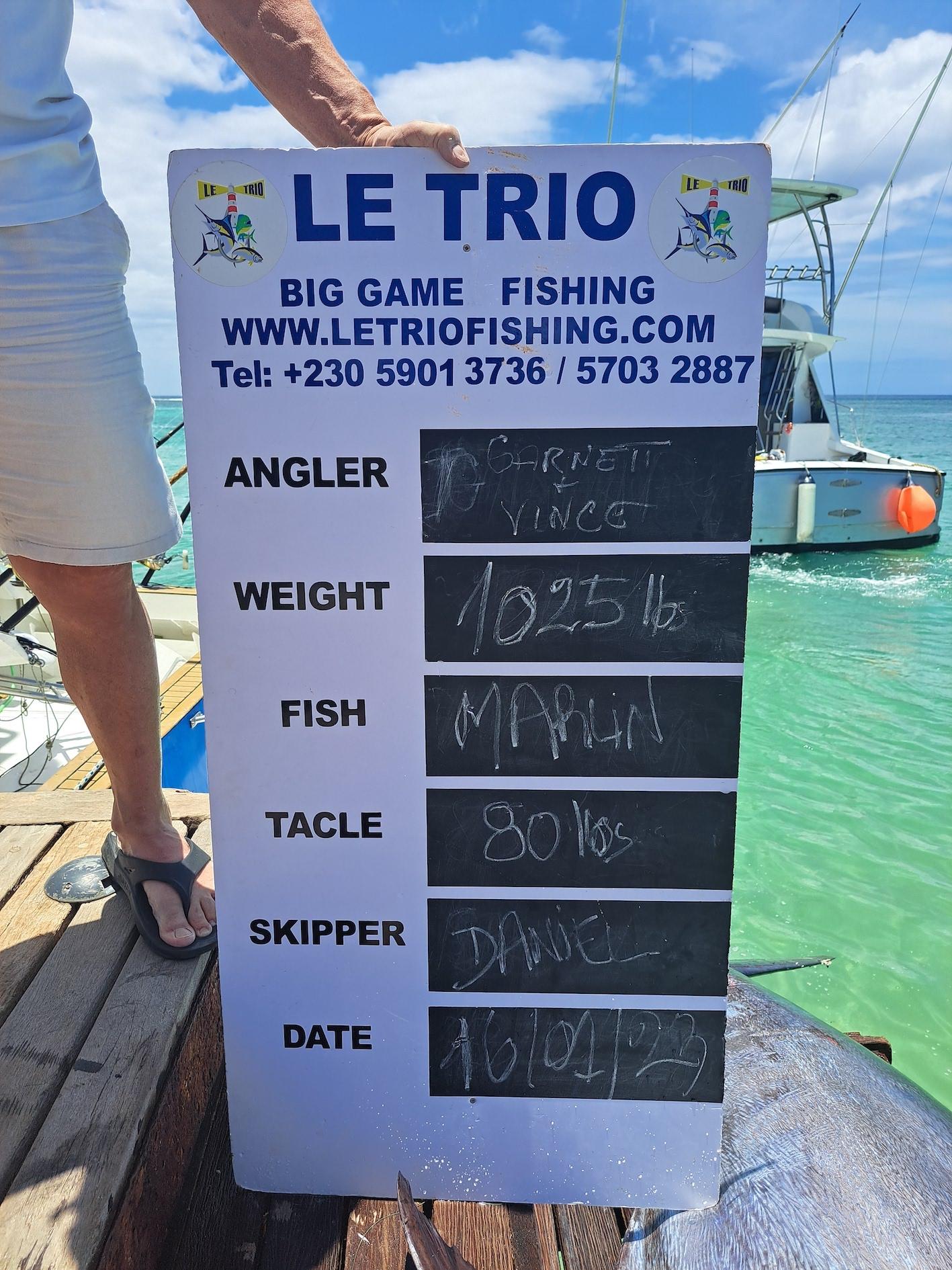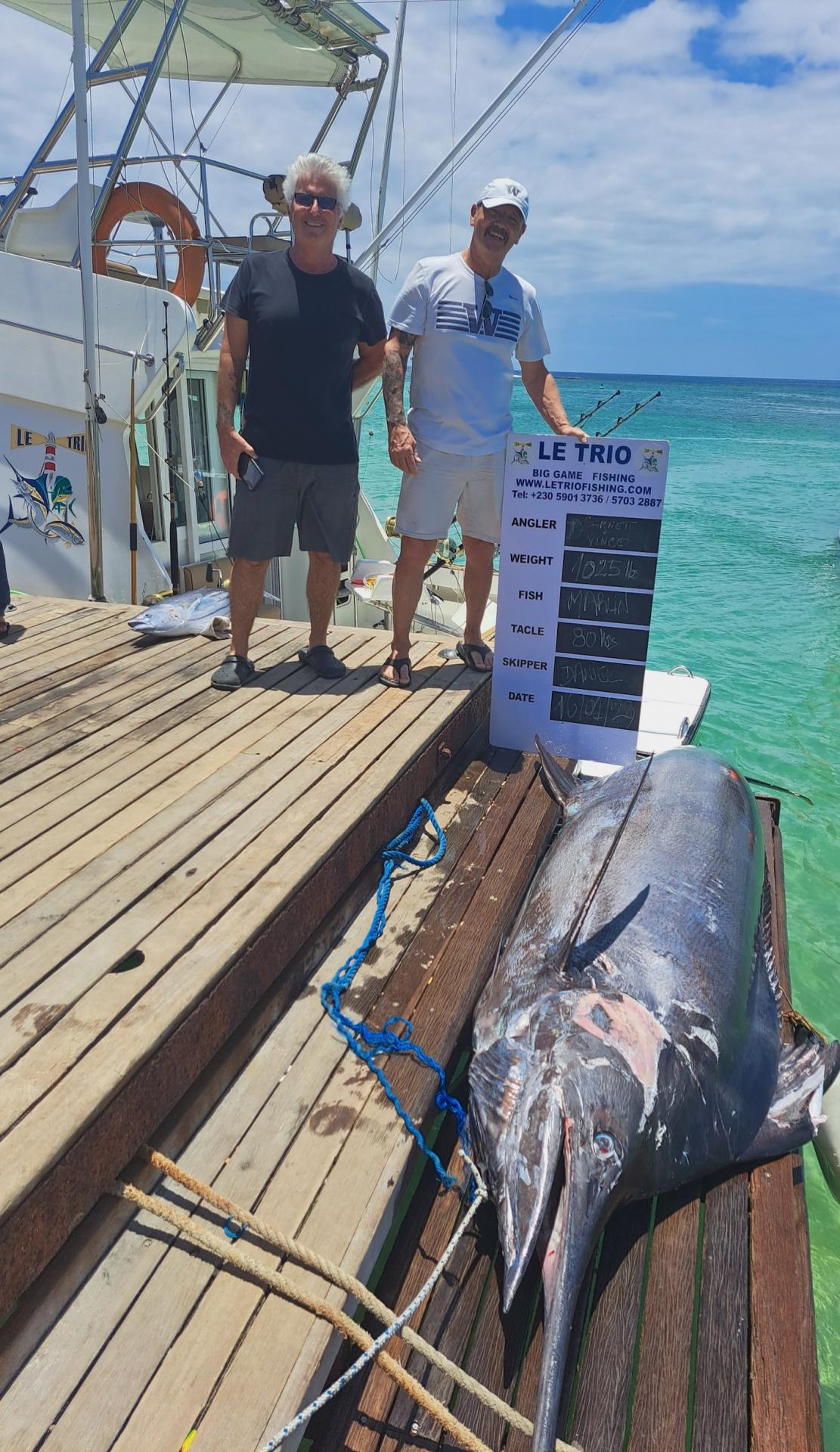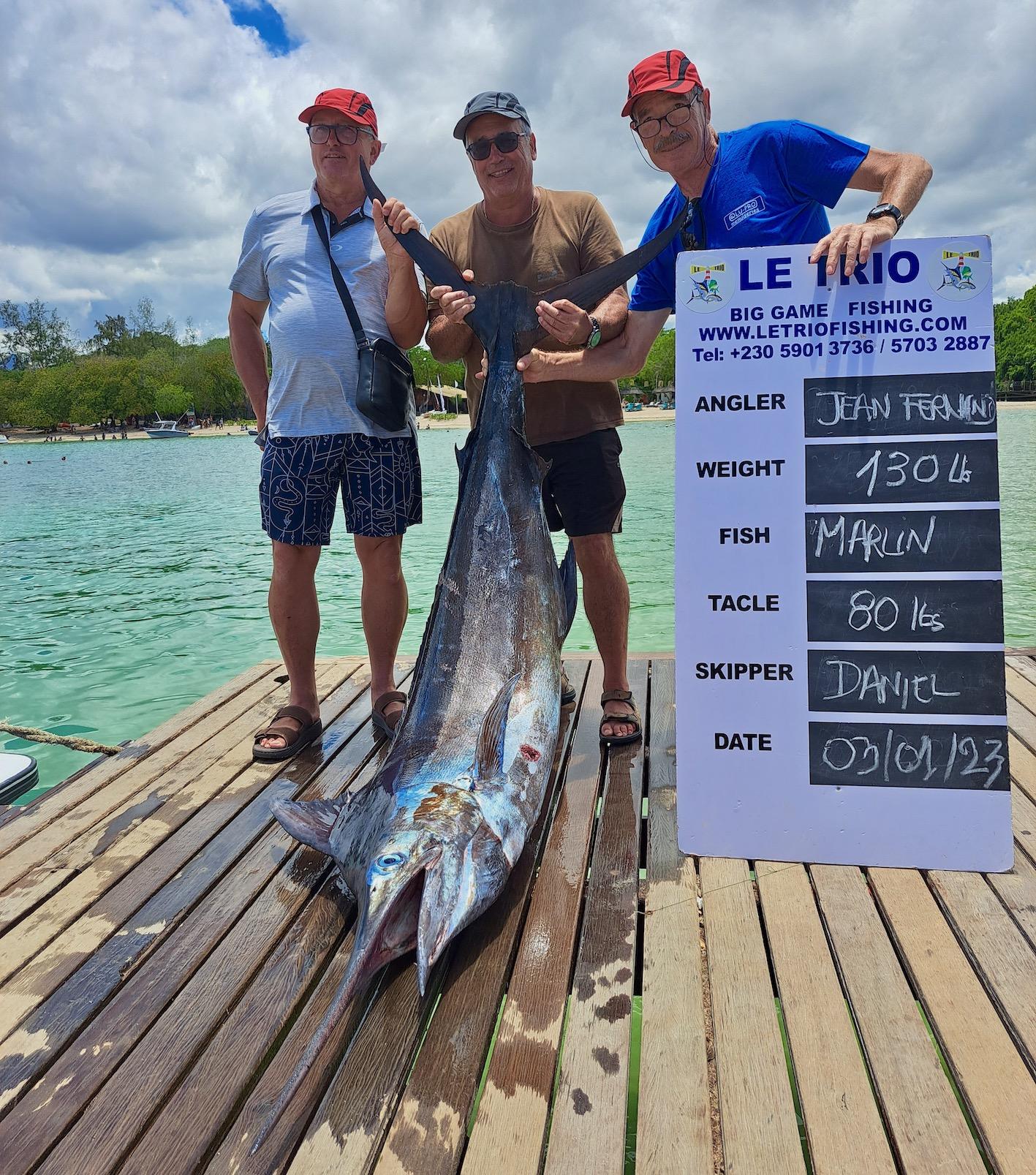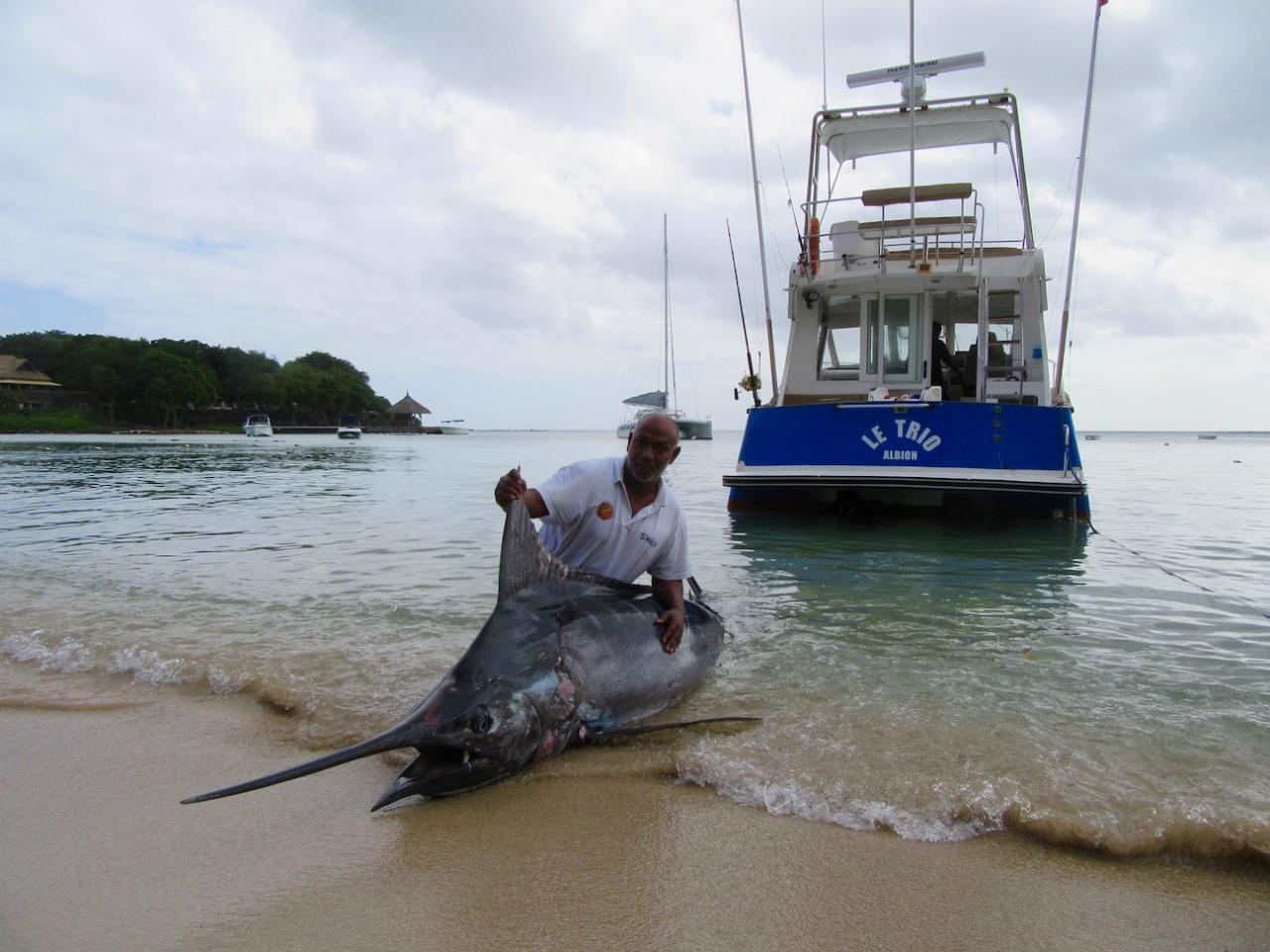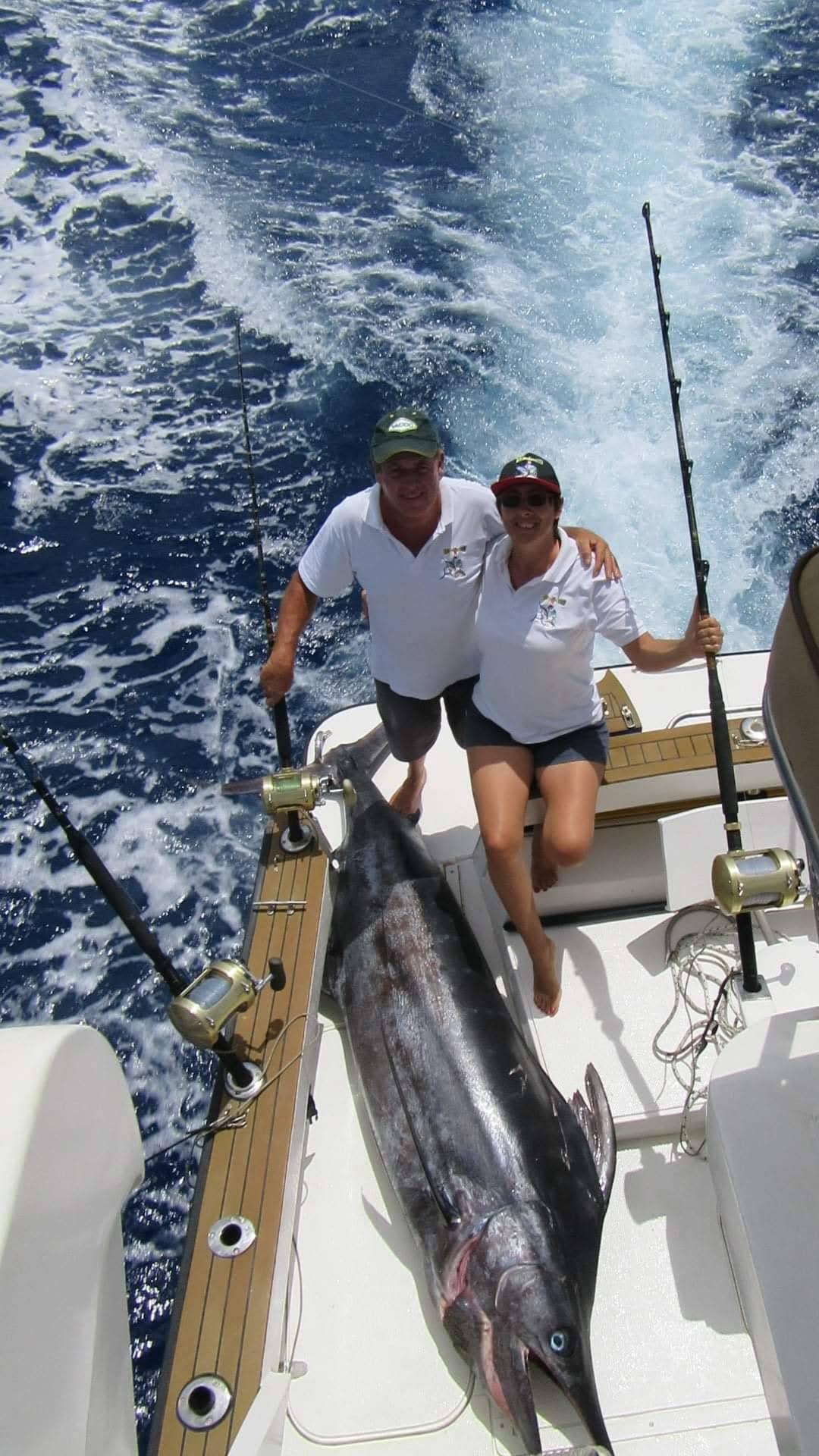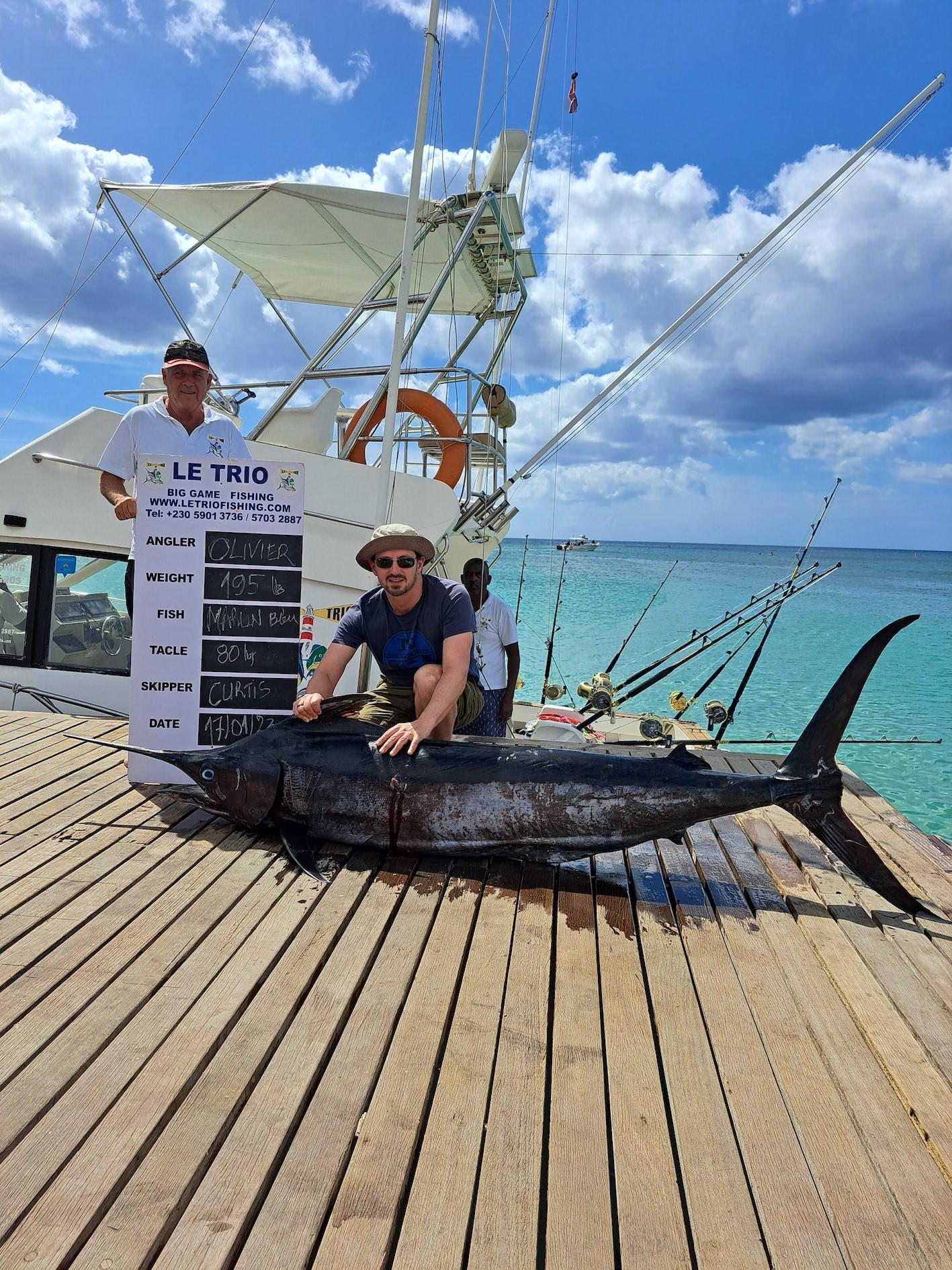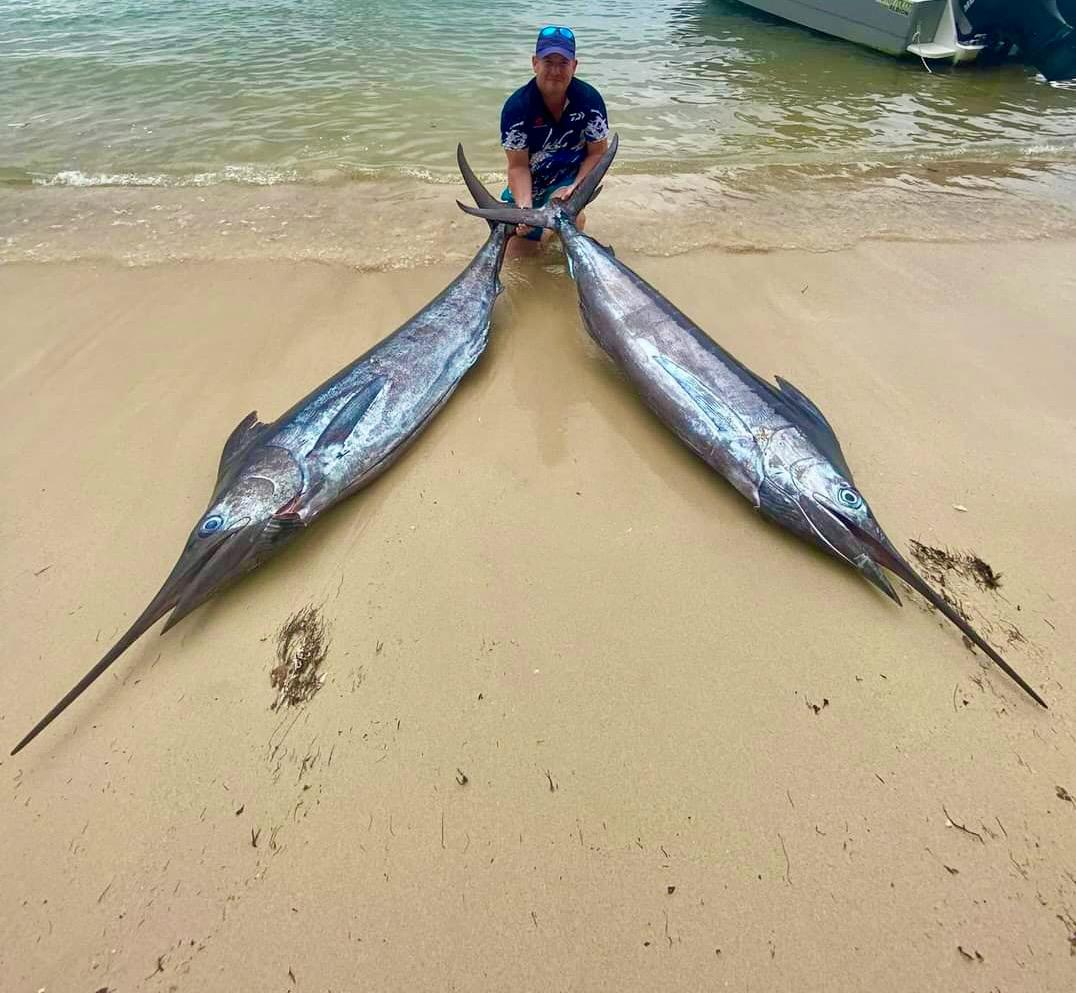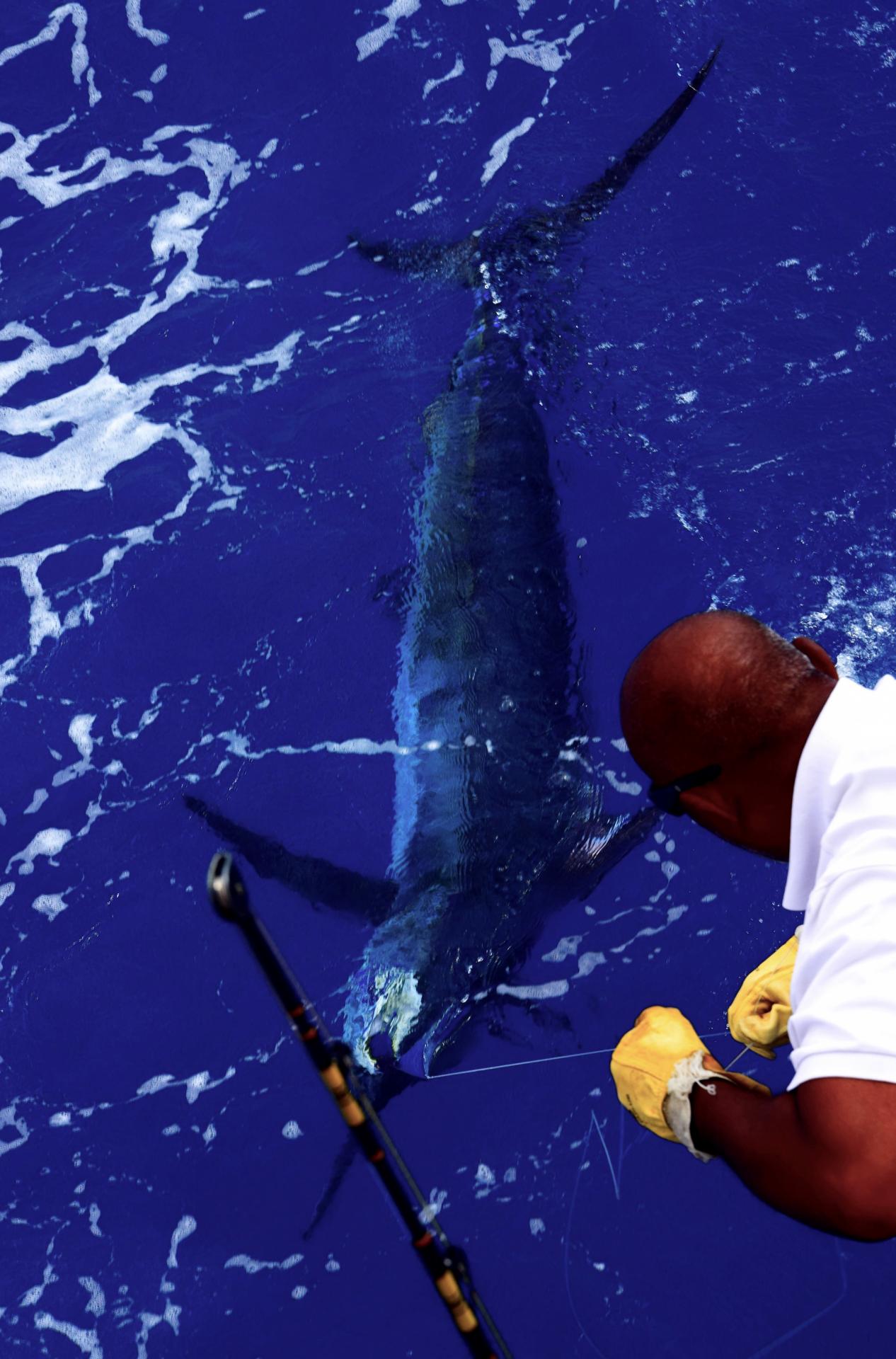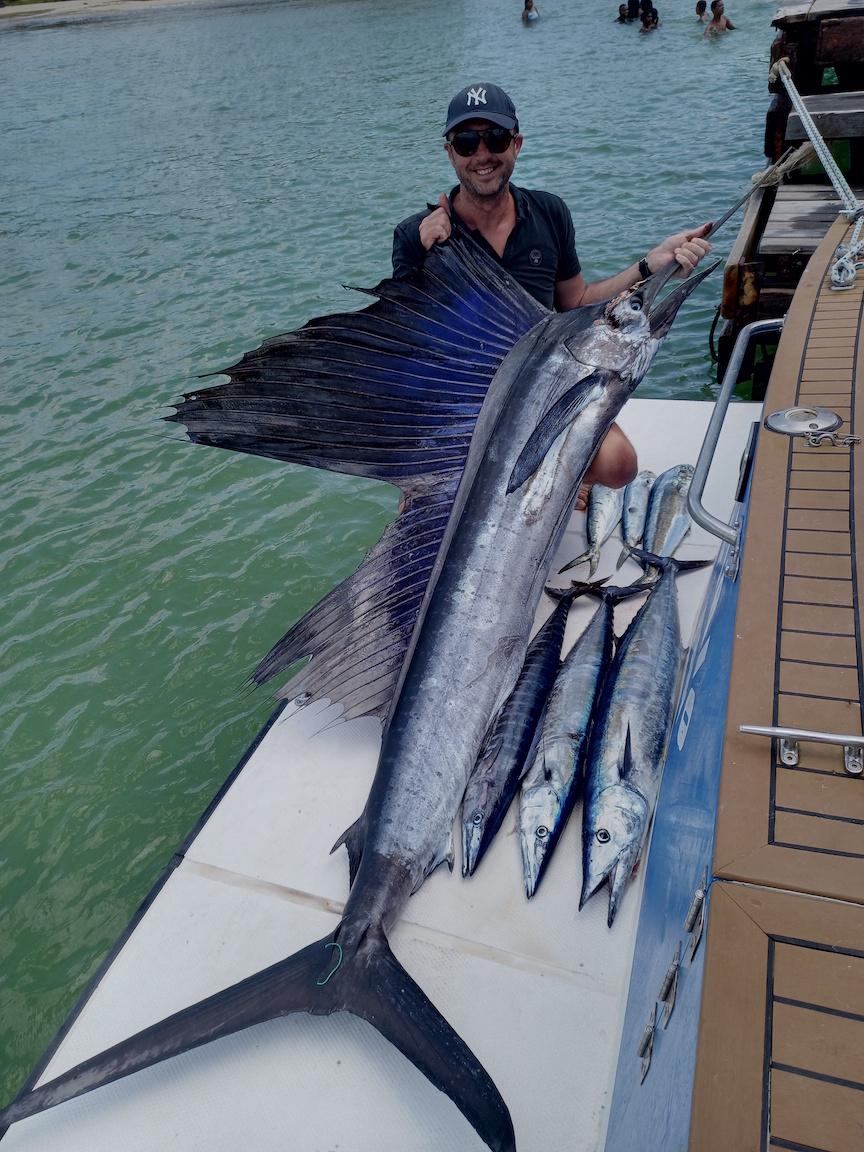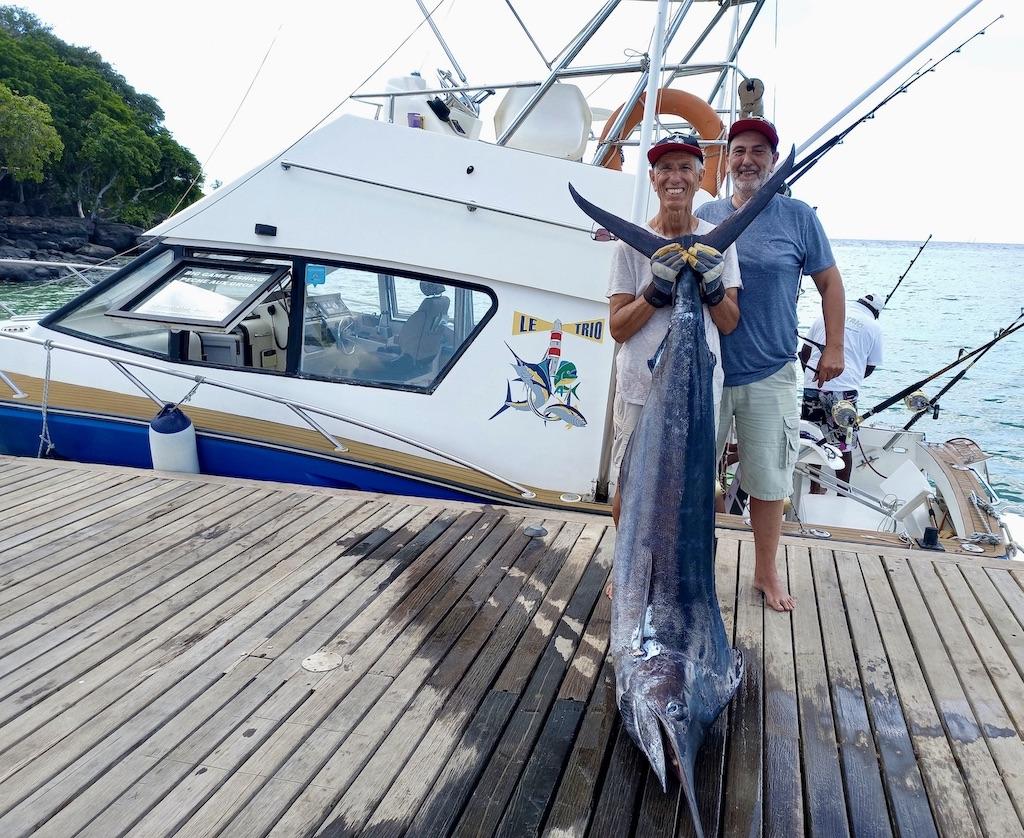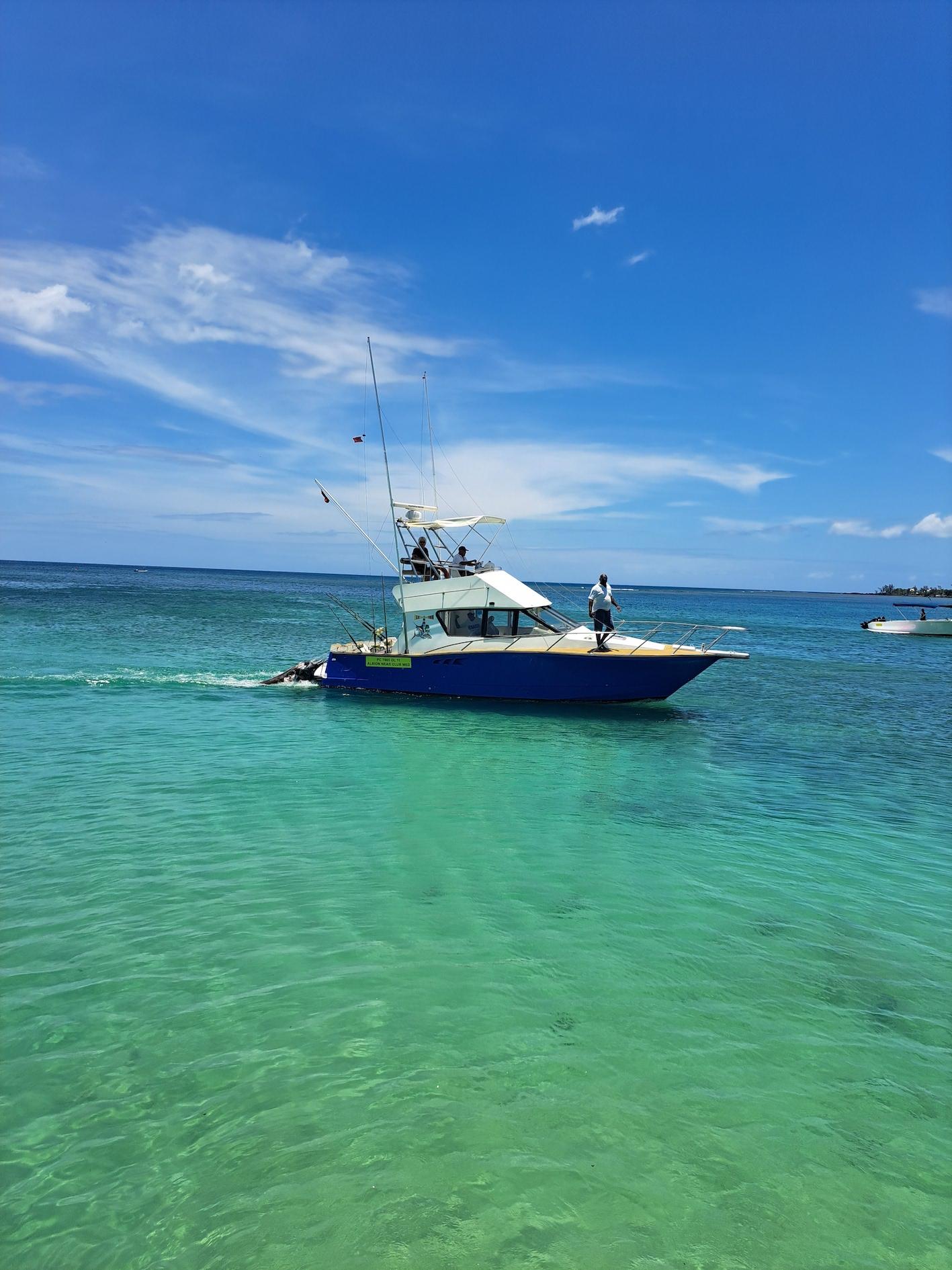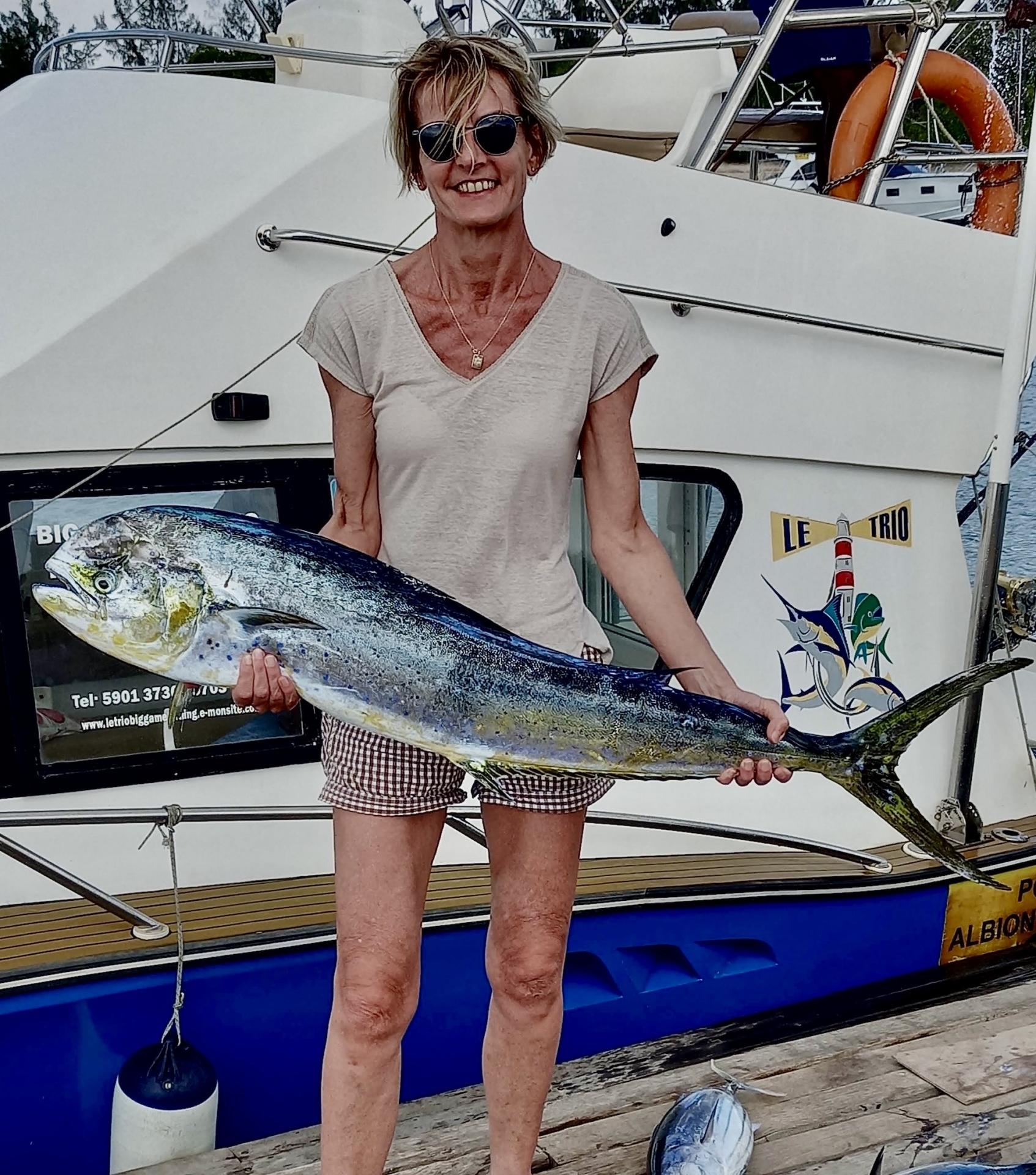BIG FISH IN MAURITIUS





Marlins
In Mauritius we are lucky to have 6 of the 7 species of marlin that exist in the world !
So, if the boat, LE TRIO crosses paths with one of these species, you can have the chance and the pleasure of fishing either a blue marlin, a black marlin, a striped marlin, a swordfish, a sailfish or a spearfish.
The moste fished marlins in Mauritius are the blue and the black marlins, they are known by their long sword-like snouts called "rostrum".
Marlins are at the top of the food chain and they like to eat squid, skipjack, mackerel, tuna and even dolphinfish.
They have no teeth and they use their nouthparts to stun their prey before swallowing it. Digestive juice helps digest food.
Its slender body allows it to travel thousands of kilometers without getting tired and its speed can reach 100 km/hour and it can weigh up to 800 Kg but the average fished is 80 to 400 kg.
Its higly developed eyes allow it to fish in low light waters as well as on the surface.
It can be found off the coast in depths reaching 3000 meters.





Big Tuna
Mauritius is the natural habitat of other fish such as skipjack, yellowfin tuna, dogtooth tuna, albacore tuna, mackerel, wahoo or barracuda, and mahis-mahis or dolphinfish
Here too you will enjoy a moment of comfortable relaxation in the boat departing from Albion and the adrenaline of fishing.
These species give you so many sweats when you have them at the end of the line !!
A big tuna has as much strength as a marlin and when ti is at the end of the line it probes and you see the line practically bend in two...when you fight you are never sure of winning the game and you never know how long ti will take...
They are generally found far from coarl reefs, which is why do not hesitate to go fishing for at least 8 hours.


Wahoos
The Wahoos or Barracudas require a lot of precision and strength at the touch but as they run out of steam very quickly you can get them on the boat fairly quickly.
On the other hand, its sharp teeth cut you one or more lures and rapalas in a row without worry.
The often live in schools and it is not uncommon to have several lines leaving at the same time ! In these moments, you have to know how to be reactive !
It is a fight that is practiced in stand up which provokes a lot of emotions !
It's a fight that is practiced in stand up which provokes a lot of emotions !


Bonitos
Skipjack, striped bonito, bolt bonito, yellow tuna and mackerel live in school of fish.
They can be far from the coasts as near these species love to eat flying fish.
In the distance, trying to spot an "army" is a Mauritian fishermen's term which meams a gathering of birds. Depending on the species, you have more or less birds that fly over and dive to eat them.
Depending, we adapt our lures, the size of our son and our rods.
These species move at breakneck speed and it's a real fun time when you have one at the end of the line.
You have to know how to control the speed of the navigation as well as the speed at which you bring it back because if you rush you onlu delay the lure...but often you can hear the reel of another rod passing by and that's to the one who will bring back this fish ! We laugh a lot during these fishing trips because the whole family can try and enjoy it !


Dorados or Mahi-mahi
The dolphinfish or mahi-mahi is a colorful fish that sport fishermen like to have at the end of the line !
Its color changes from turquoise blue, to yellow and green then when it dies, it becomes gray.
It lives in warm temperatures exceeding 20°C and its migration depends on the heat of the water.
In hunting it can reach 100 km/hour and has a lifespan of 4 years.
When you have a dolphinfish at the end of the line you will quickly notice that it has the annoying habit of jumping out of the water several times to allow itself to detach itself from the hook. You have real feelings until the end and in general your arms remember it !
His favorite foods are flying fish and live bonito, but articial lures are also good for fishing them.



The usually live in pairs but at times they form schools. The difference between the male sea bream and the female is the shape of the head. Indeed, the female has a round head while the male has a developed head almost square as flattened.
They like to be off the coast and close to the surface of the water under piles of floating objects, drifting ropes, trunks, branches...which are called in Mauritian language "a duck"
Do not hesitate to come and discover or rediscover its sensations !
Add a comment
